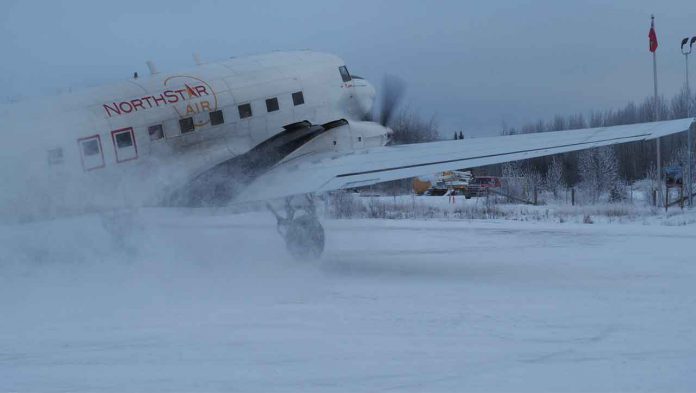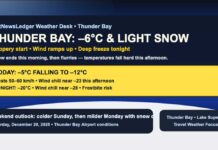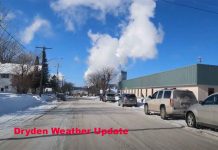Visibility is relatively clear at 16 kilometers, despite the ongoing light snowfall.
Tomorrow’s Forecast
Expected Conditions
Today, the region can expect cloudy skies with a 30% chance of flurries. Winds will remain light, up to 15 km/h, with temperatures reaching a high of -4°C. The wind chill factor will make it feel colder, ranging from -12°C in the morning to -7°C in the afternoon. The UV index is low at 1.
Tonight, the mainly cloudy conditions continue with a 30% chance of flurries. The wind will stay constant, leading to a low of -12°C. The wind chill will vary from -8°C in the evening to -18°C overnight, indicating a significant drop in perceived temperature.
Friday brings mainly cloudy skies with a 30% chance of flurries in the morning, shifting to light snow by late afternoon. The wind will pick up, coming from the south at 20 km/h. Temperatures will slightly warm up to a high of +1°C, but the morning wind chill could feel as low as -19°C. The UV index will be low at 2.
The weekend forecast predicts periods of snow on Saturday, accompanied by local blowing snow and windy conditions, with a high of -5°C. The night will be cloudy with a 60% chance of flurries and a low of -16°C.
Sunday remains cloudy with a 60% chance of flurries and a high of -8°C. Nighttime will introduce cloudy periods with a 40% chance of flurries, dropping to a colder low of -23°C.
Wardrobe Recommendations
With varying conditions of flurries, light snow, and periods of significant wind chill, residents and visitors to the Northern Ontario First Nations communities should prioritize warm and layered clothing. Waterproof outerwear, insulated boots, gloves, and hats are essential to stay comfortable and safe during outdoor activities. Additionally, face protection is advisable during windy conditions to prevent frostbite.
Weather Trivia
The Northern Ontario First Nations communities are no strangers to harsh winter conditions, often experiencing a wide range of weather patterns due to their unique geographical locations. The local knowledge of weather patterns is deeply embedded in the cultural traditions of these communities, showcasing a profound respect for and adaptation to the natural environment.







